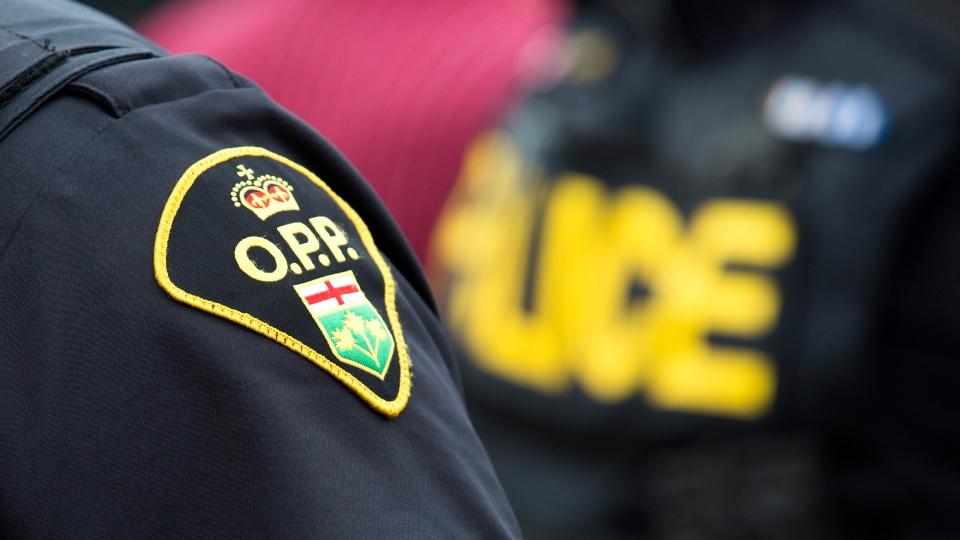Halloween campaign promotes need for accessible trick-or-treating

Posted Oct 16, 2024 06:20:01 AM.
Last Updated Oct 16, 2024 09:50:26 AM.
Trick-or-treating may be more accessible for children with various abilities thanks to a campaign called Treat Accessibly.
It all started in Toronto in 2017 when a six-year-old asked her father how a boy in a wheelchair would get up the steps they were decorating for Halloween to get some candy.
Her father, founder of Treat Accessibly, Rich Padulo, then took it upon himself to make their home accessible and inclusive on Halloween. Padulo created a lawn sign that he said is similar to the one that has now been distributed about 250,000 times across Canada.
Padulo mentioned it all started when a news reporter first wanted to share their story, which is how Re/Max found out about it and decided to sponsor free Treat Accessibly signs. They sponsor the free signs that the City of Cambridge distributes every year. Kinder then found out and partnered with them, putting their logo on Halloween candy bags.
This year, they expanded even further thanks to his now 13-year-old daughter, Siena.
“Our daughter met with the vice president of Pet Valu in July and shared the story. He’s a dad and he loves Halloween, so he agreed to distribute our lawn signs from all 700 Pet Valu stores across Canada,” said Padulo.
Canadian Tire also partnered with Treat Accessibly to help them host Halloween villages across Canada.
Padulo had a wild idea after visiting the children’s rehabilitation hospital in Toronto and seeing how the only way those kids could trick or treat is in a foyer with their parents in a circle because so many homes weren’t accessible. They are hosting nine Halloween Villages this year, which can be registered for through a website.
“This year we’ll have over 20,000 guests attending and it’s children with mobility, sensory, intellectual disabilities, kids that are so ill they can’t trick or treat on Halloween night,” said Padulo.
Each city Padulo said they can get up to 3,000 kids and parents, including kids without disabilities so they can learn more about how to be inclusive.
“We meet so many of the parents at the Halloween Villages and what they share is really what keeps us going. It often is the only time they feel truly included in a community event and welcomed.”
Padulo was also made the Appointee for the Ontario Accessibility Standards Advisory Council for his work with Treat Accessibly.
“There are hundreds of different disabilities within the broad definition of disabilities. What Treat Accessibly does, is it supports all disabilities on either side of the treat,” said Padulo.
They are hoping to hit 400,000 signs distributed by next year, one for every child that identifies with a disability in Canada. With some plans to expand into the U.S., Padulo is hoping to get more partners involved.
“Once people treat accessibly, they start thinking about accessible inclusion in other parts of their lives. We see no end to the opportunity for growth.”
Padulo added he hopes it becomes part of the Halloween tradition Canadians practice, only changing things slightly to include more families into the mix.
The City of Cambridge is adding more locations for sign pick up this year, said Stephen Aboagye, Supervisor of Equity, Diversity, Inclusion and Accessibility.
This year they added Idea Exchange to their list. Aboagye sees this as a key initiative for inclusion work that they do in the city.
Until the end of October, free Treat Accessibly lawn signs are available at the following locations.
- Cambridge City Hall, 50 Dickson St., Cambridge
- John Dolson Centre, 212 South St., Cambridge
- Lang’s Community Health Centre,1145 Concession Rd., Cambridge
- W.G. Johnson Centre, 31 Kribs St., Cambridge
- RE/MAX Real Estate Centre Inc, Brokerage, 766 Old Hespeler Rd, Cambridge
- Idea Exchange – Clemens Mill, 50 Saginaw Park, Cambridge
- Idea Exchange – Hespeler, 5 Tannery St. E., Cambridge
- Idea Exchange – Old Post Office, 12 Water St. S., Cambridge
- Idea Exchange – Preston, 435 King St. E., Cambridge
- Idea Exchange – Queen Square, 1 North Sq., Cambridge
Aboagye mentioned it is one sign per household, which can be placed near sidewalks or easy to see spots.
Some tips the city is giving out to be inclusive on Halloween:
- Create a trick-or-treating station in a location that is easily accessible to all, as some trick-or-treaters may have difficulties navigating inclines, stairs, curving or uneven walkways, etc. – the end of the driveway or garage (if the driveway isn’t too steep)
- Make sure the path to the trick-or-treating area is well-lit and clear of hazards.
- Avoid the use of strobe lights, and high-pitched, sudden, loud noises that may alarm some children
- Ensure that pets are kept safely away from the front of the house or trick-or-treating area, as some pets can be intimidating for children
More information about the campaign can be found on Treat Accessibly website.
Padulo said it is beyond moving to see the growth of the campaign that started on their front lawn.








